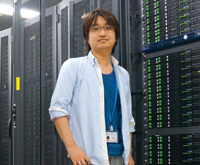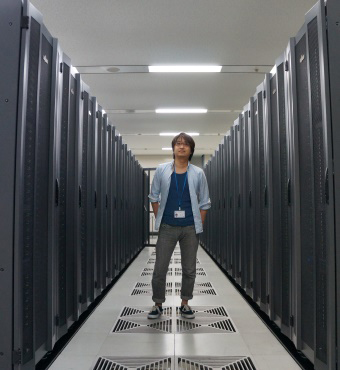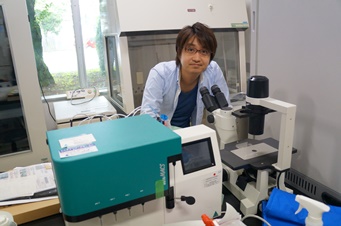Sep. 27, 2013
Linking theory and experiment with bioinformatics
Itoshi Nikaido, Unit Leader

Bioinformatics Research Unit, RIKEN Advanced Center for Computing and Communication
How did you join RIKEN, and what kind of support did RIKEN provide?
During my master’s degree, I participated in a project to decipher complementary DNA, and at the same time I studied bioinformatics by myself. Then, I met Hidemasa Bono from Yoshihide Hayashizaki’s Genome Exploration Research Group, which had launched the Mouse Encyclopedia Project to sequence mouse genes. Since their project was deeply related to my analysis technology, I was invited to join FANTOM1—an international research consortium—and we wrote a paper together.
When Hayashizaki moved to the RIKEN Yokohama Institute, I embarked on a PhD at a partnering graduate school and worked on microarray data analysis as well as sequence analysis. Although I was only a student at the time, RIKEN took my research proposals seriously and allowed me to use their world-leading sequencing facility. I appreciate RIKEN’s great support for my research.
Please tell us about your recent work at RIKEN.
 © 2013 RIKEN
© 2013 RIKEN
I carried out postdoctoral research in Hiroki Ueda’s lab in Kobe, engaging in analysis of next-generation sequencing data. At the same time, I worked with Yohei Sasagawa to successfully develop ‘Quartz-Seq’, a technique for determining the level of gene dosage per cell (see Research Highlight: “Perusing the cellular library”).
In April 2013, I became unit leader of the Bioinformatics Research Unit at the RIKEN Advanced Center for Computing and Communication. Currently, I research and develop novel data analysis and experimental techniques for next-generation DNA sequencing and am working on a technique to support the analysis of bioinformatics data.
What else have you learned during your time at RIKEN?
The study of bioinformatics mainly revolves around developing methods and software for data analysis. However, it is important for bioinformaticians to possess strong communication skills so that they are able to carry out research projects in collaboration with experimental biologists and share problems with them. Through joint projects with many experimental biologists, I learned that bioinformaticians need to develop and submit research proposals that experimentalists are unlikely to think of.
What is the best thing about working at RIKEN?
 © 2013 RIKEN
© 2013 RIKEN
Researchers at RIKEN are free to concentrate on their research because they have no obligation to teach, and the cost of running their labs is partially supported by their associated center. In addition, RIKEN offers excellent research support, including assistance with the planning and dissemination of research and access to external funds. Compared to those who work at other government institutions, scientists at RIKEN have more freedom to do research based on their own interests.
What would you say to other people considering joining RIKEN?
RIKEN is a fantastic research institution in terms of its facilities and work environment. The way individual labs operate varies, so it is important to carefully consider which lab you wish to work in and the kind of people you would like to work with. RIKEN can provide you with a great research environment when your goals and the atmosphere of the lab are well matched.
